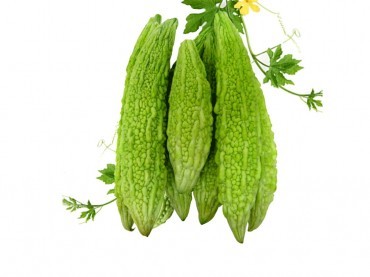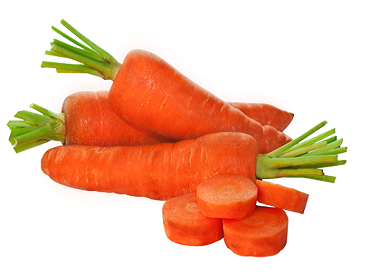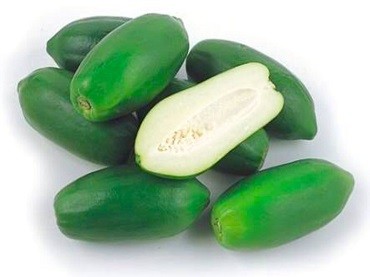BITTER GOURD
Local Name: Karala
English: Bitter gourd
Scientific name: Momordica
Family: Cucurbitaceae
Availability: Throughout the year
Description: Momordica charantia (colloquially: bitter melon; bitter apple; bitter gourd; bitter squash; balsam-pear; with many more names listed below) is a tropical and subtropical vine of the family Cucurbitaceae, widely grown in Asia, Africa, and the Caribbean for its edible fruit. Its many varieties differ substantially in the shape and bitterness of the fruit.
The fruit has a distinct warty exterior and an oblong shape. It is hollow in cross-section, with a relatively thin layer of flesh surrounding a central seed cavity filled with large, flat seeds and pith. The fruit is most often eaten green, or as it is beginning to turn yellow. At this stage, the fruit's flesh is crunchy and watery in texture, similar to cucumber, chayote or green bell pepper, but bitter. The skin is tender and edible. Seeds and pith appear white in unripe fruits; they are not intensely bitter and can be removed before cooking.
Health Benefits:
- Acts as a blood purifier
- Helps in weight loss
- Improves immunity
- Great for diabetes
- May Have Cancer-Fighting Properties
- Could Decrease Cholesterol Levels
- Versatile and Delicious etc.
CARROT
Local Name: Gajor
English: Carrot
Scientific name: Daucus carota var. sativa
Family: Apiaceae
Description Carrot, (Daucus carota), herbaceous, generally biennial plant of the Apiaceae family that produces an edible taproot. Among common varieties root shapes range from globular to long, with lower ends blunt to pointed. Besides the orange-coloured roots, white-, yellow-, and purple-fleshed varieties are known.
Health Benefits:
- Reduced risk of cancer
- Lower blood cholesterol
- Weight loss
- Eye health
GREEN PAPAYA
Local Name: Kacha Papay
English: Green Papaya
Scientific name: Carica papaya
Family: Caricaceae
Availability: Throughout the year
Description: The Green papaya fruit weighs an average of one to two pounds. It is pear-shaped with a true green peel and a pale translucent yellow-green flesh that bears a pocket of seeds in its central core. The flesh and the seeds are the edible part of the fruit. The flesh is similar in texture and consistency to that of a mango. It is semi-firm and succulent, easily pierced when ripe. The flesh's flavor is lean and subtly sweet. Its seeds are tart and peppery. They can be ground and used as a pepper substitute. Green papaya is a powerful fruit full of essential nutrients and enzymes to promote digestive health.
Since enzyme levels decline as the fruit ripens, raw papaya is picked when it is still green to retain all of its natural enzymatic qualities.
Health Benefits:
- Healing problematic skin conditions and injuries.
- Cure for menstrual pain
- Controls bowel movements
- Protects from heart diseases
- Burns calories and extra fat etc.
PARVLE/POINTED GOURD
Local Name: Patol
English: Pointed gourd/ Tinduri/Palwal
Scientific name: Trichossanthes dioica
Family: Cucurbitaceae
Availability: Throughout the year (Peak time: April – November)
Description: Pointed Gourd, also known as parwal, parval, Wild snake gourd, patola, green potato is a vine plant in the Cucurbitaceae family, similar to cucumber and squash, though unlike those it is perennial. It is a dioecious vine plant with heart-shaped leaves and is grown on a trellis. The plant is native to Indian subcontinent and is one of the important vegetables of this region. The fruit is the edible part of the plant which is cooked in various ways either alone or in combination with other vegetables or meats. They have been mainly used to prepare gravy kind dishes and dry dishes. In certain parts it can also be utilized to organize a particular number of sweets. Do not confuse this vegetable with Ivy gourd or Tindora. This vegetable looks similar to Ivy gourd but little bigger in size.
Health Benefits:
- Blood purifier
- Improves digestion
- Reduces flu
- Fight with aging factors
- Treats constipation
- Controls blood sugar and cholesterol
- Aids in weight loss etc.




